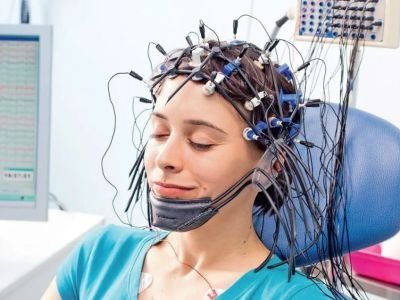Ultra-compact EEG Electrode Offers Accurate Readings with Invisible Design
Scientists at Pennsylvania State University have developed an ultra-compact, hair-thin EEG sensor that could revolutionize the way we monitor brain activity. This new technology is not only more accurate than traditional EEG methods but is also virtually invisible when applied to the scalp.
What Is a Hair-Thin EEG Sensor?
The EEG sensor, designed to measure brain waves, is made from a 300-micron-thick polymer hydrogel. Unlike conventional EEG electrodes that rely on bulky setups and conductive gels, this sensor is lightweight, flexible, and discreet. It sticks to the scalp using a biocompatible glue, ensuring it stays in place even during activities like showering or exercise.
One of the most exciting aspects is that the electrode can be customized to match the color of the user’s hair, making it nearly impossible to notice. This design makes it a promising tool for long-term brain monitoring without causing discomfort or self-consciousness for the wearer.

A Major Leap for Neurological Health
The new hair-thin EEG technology is expected to bring major improvements in diagnosing and monitoring neurological disorders such as:
-
Epilepsy
-
Sleep disorders
-
Chronic migraines
-
Cognitive decline
Because the sensor is so thin and firmly attached, it reduces the movement-related noise that often interferes with EEG readings. This makes it particularly effective for continuous use and real-time monitoring.
Future Applications Beyond Medicine
Researchers believe that this compact EEG sensor has potential far beyond healthcare. In the near future, it could be integrated into:
-
Neural interface systems
-
Virtual and augmented reality headsets
-
Wearable cognitive health trackers
-
Mental wellness tools
Currently, the prototype still needs to be connected via a wired cable, but scientists are working on a fully wireless version, which could make the technology even more accessible and user-friendly.
Conclusion: A Promising Step Forward in Brain Tech
The development of a hair-thin EEG sensor is a significant milestone in the field of neuroscience and wearable technology. With its high accuracy, comfort, and nearly invisible design, this new EEG electrode could transform how we monitor brain activity, both in medical and consumer applications. As the technology evolves into a wireless format, it may soon become a part of everyday life for health monitoring and brain-computer interfaces.
